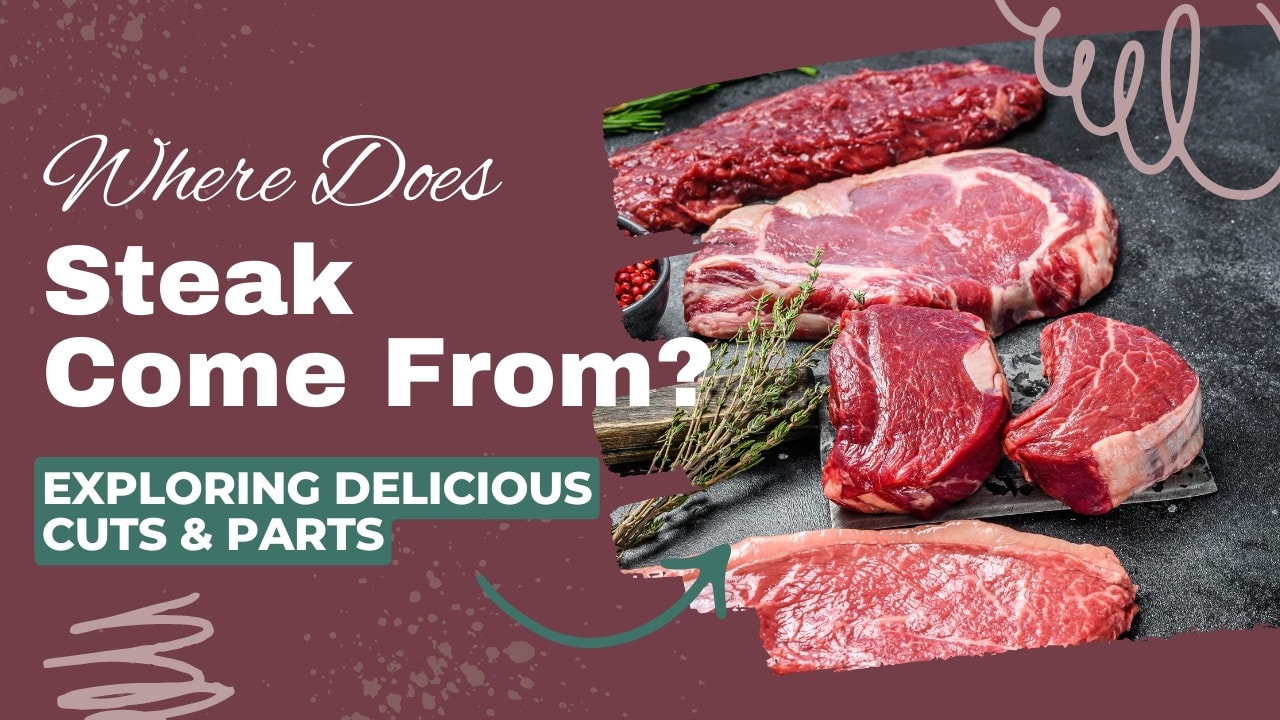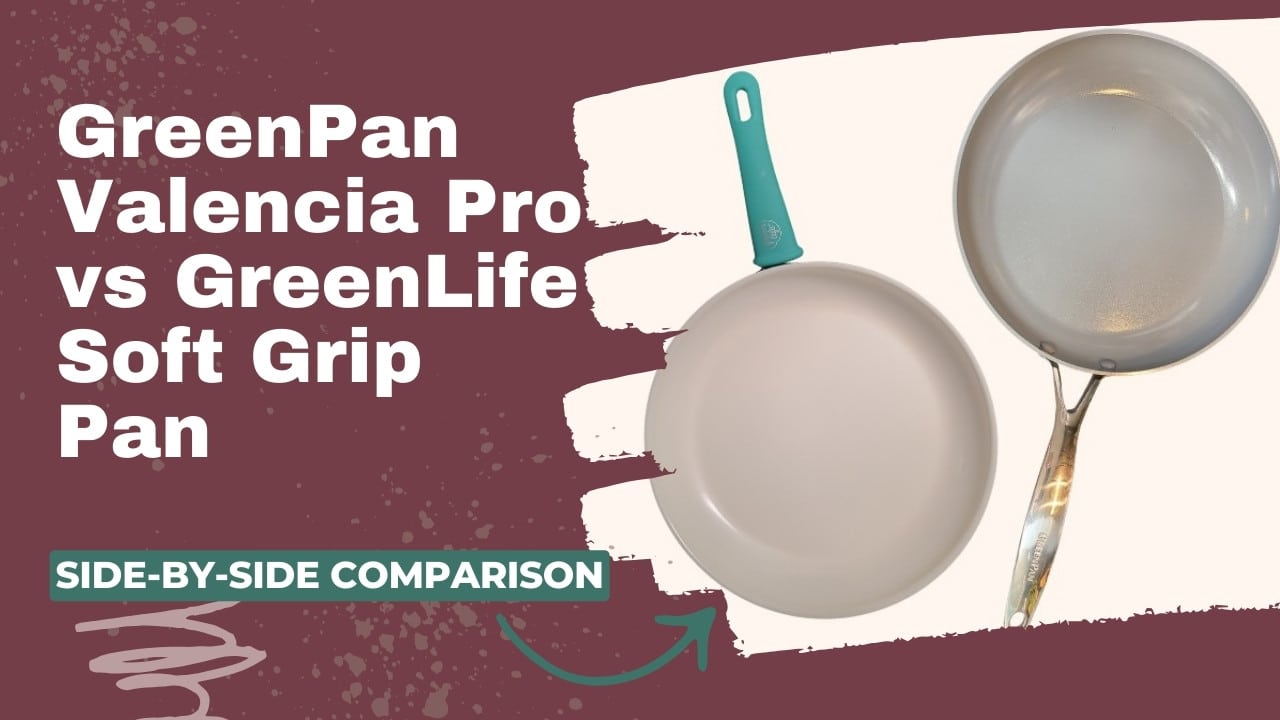When you’re chowing down on a perfect steak, it can be easy to focus on the flavors and not what you’re actually eating. But if you pause for a second to question it, you may ask yourself:
Where does steak come from?
As a chef, I only became familiar with where each cut comes from in the animal at cooking school. But today, I’m here to share that knowledge with you.
By the end of this article, we will:
- Teach you what steak is
- Familiarize you with different types of steak
- Tell you where each steak comes from
Where Does Steak Come From?
A steak is a thick-cut portion of flesh taken from a steer. Many cuts of meat can be cut into steak, so they can be found throughout the torso of the animal.
To create the steak, a flat cut of meat is sliced perpendicular to the muscle fibers and may or may not include a bone. These cuts are usually one portion, but this can vary depending on where on the animal the steak is cut from.
The term ‘steaks’ refers specifically to cuts of beef that take very little cooking to be mouth-tender. Meat with this quality can be found throughout the animal, from the chuck to the round.
Each steak has its own name and unique qualities that make them sing in using different recipes and cooking techniques.
What is Steak?
Firstly, before we get into where steak is actually located, it’s important to go back to basics and answer the question: what exactly is steak?
Steak is essentially an animal’s muscle tissue that has been sliced into portions against the grain of the flesh. Chefs consider a cut as a steak if it takes relatively little cooking, like a sear, to cook it to a designated temperature. This eliminates all cuts that need slow cooking to break down.
Steak can refer to the meat of other animals like chickens, lamb, and pork. But usually, these items are specifically called ‘lamb steaks,’ for example. Generally, when you hear someone mentioning a steak, you can presume they are talking about beef specifically.
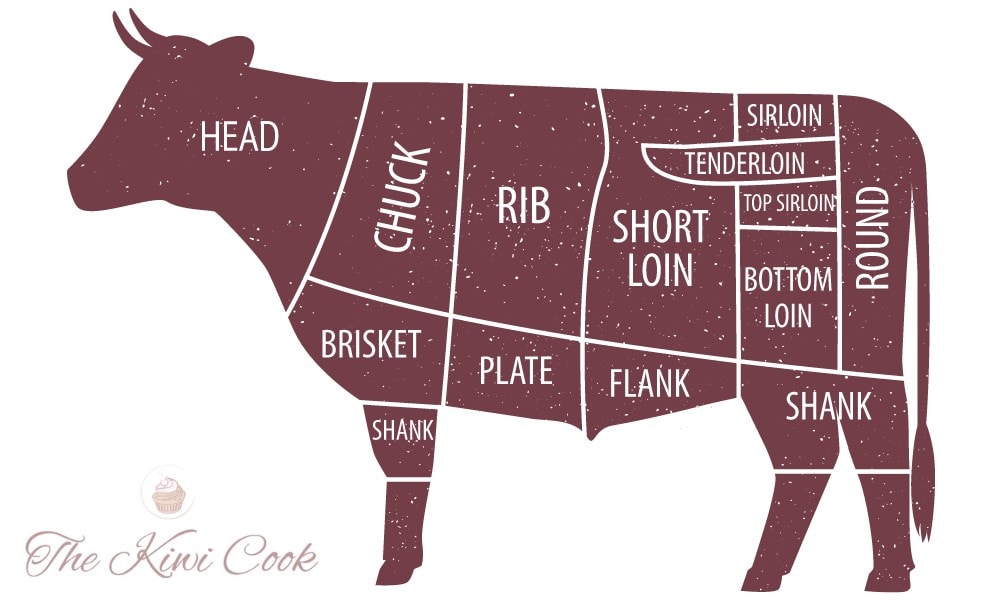
In this article, we will focus on beef steak in particular and their locations on a steer.
When breaking down an animal into cuts, the butcher will divide the carcass up into large cuts and slice those pieces individually. Some of these will become steaks from the animal’s torso. I will go into more detail about that in the next section.
There are certain qualities about each steak that make them unique. These factors are primarily dictated by where they are located.
Let’s take a closer look at how a steak’s location can affect the meat:
Texture
The texture of a steak comes down to how much work that muscle does as the animal moves around.
That’s why cuts found in the legs of the animal need to be slow-cooked because they are the muscles used most often throughout the day. On the other hand, the muscles along the spine or at the top of the rump are not used as frequently. These cuts are more tender, so they classify as steaks.
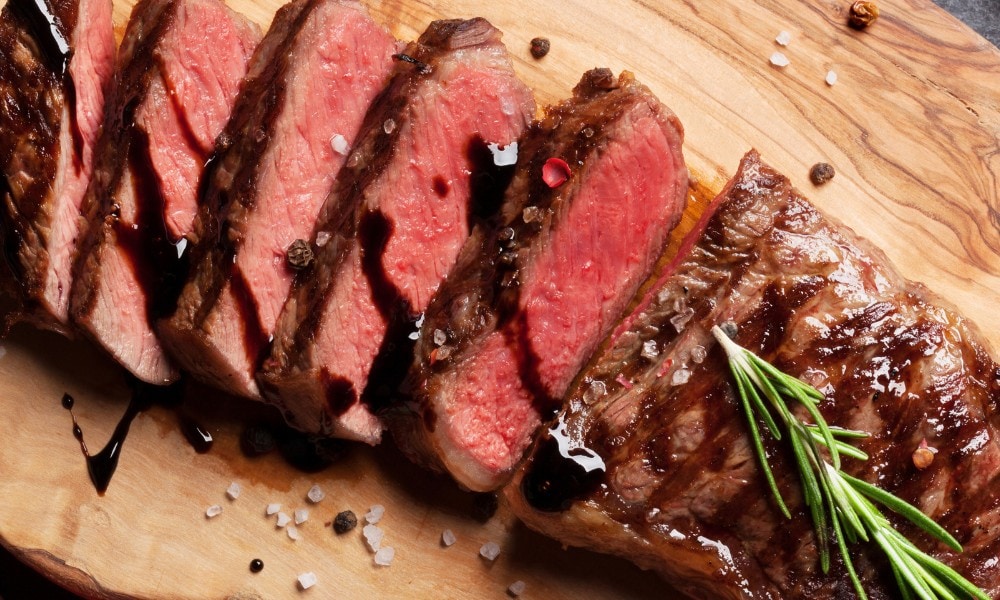
The fat content and marbling throughout the meat also affect the texture. The more fat, the juicier the flesh will be. Where fat is deposited in the body will affect the flavor of the steaks from that area.
Another element to look out for is the grain, which varies from cut to cut. To get the most tender bite, it’s essential that you cut your steak against the grain.
Size
Steaks can be large or short, thin or thick. For example, the flat iron is a small and relatively thin steak, while the porterhouse is incredibly large and thick.
These factors are so drastically different due to where the cuts are found in the cow. Cutting a porterhouse from the short loin will result in a larger steak than a small piece (the flat iron) hidden in the chuck. This is why one steak may serve one person while another feeds a whole family!
You have to adjust your cooking techniques to tackle each steak. Thinner steaks need to be quickly seared over very high heat, while thicker steaks may also need to be oven baked for a short period to really penetrate the meat.
Flavor
Fat marbling is a key factor that gives steak its flavor. If cooked correctly, the fat marbling in any cut of beef should melt and create a juicy melt-in-the-mouth experience.
The amount of fat on a steak depends on where the cut is from. For instance, filet mignon has very little fat marbling and no fat cap, while a ribeye is highly marbled with a thick fat cap. The more fat, the richer and more beefy the flavor will be.
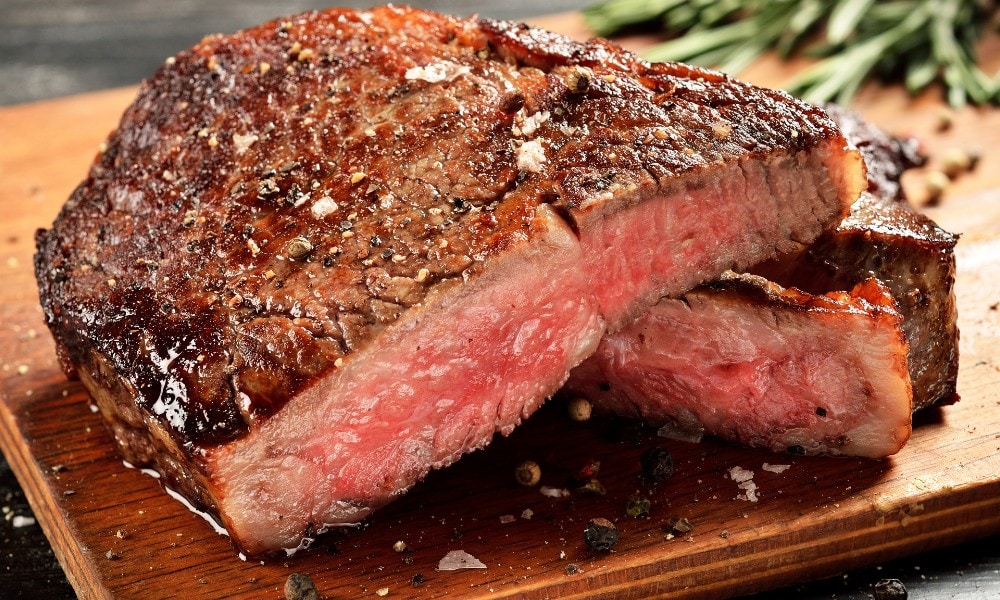
Of course, other factors besides location can affect how your steak tastes. Flavor can also be affected by what breed the cow is and what diet it has been fed. Some consumers prefer the flavor of grass-fed beef. Others prefer the grain-fed variety. On top of that, the animal’s age also plays a part, along with how long a steak is matured after butchering.
Types of Steak and Where They Come From
So, as you can see from our exploration above, steak isn’t found in a single location but can be cut from sections throughout the body of the cow. These locations dictate the size and tenderness of those cuts.
The carcass of the cow can be divided into four main sections: chuck, rib, loin, and round. If you are an amateur butcher and look at this in more detail, you will find the animal divided into up to eight or more sections, but these four sections are all we need for today’s explanation.
Here, I am going to break down all the different cuts of steak, where they come from in the body of the cow, and how each type of steak needs to be cooked to be at its best.
It’s also worth pointing out here that some steaks are named after the breed of cow they come from, Wagyu beef, for example. These cuts can only apply to these specific breeds of cow that are known for their flavor.
Here are the different kinds of steak and where each can be located:
Rump
Rump is by far one of the most popular steaks in the world, and for very good reason. This steak is taken from the bottom round, which is a very lean cut. But because it has very little fat, it can be overcooked very quickly.
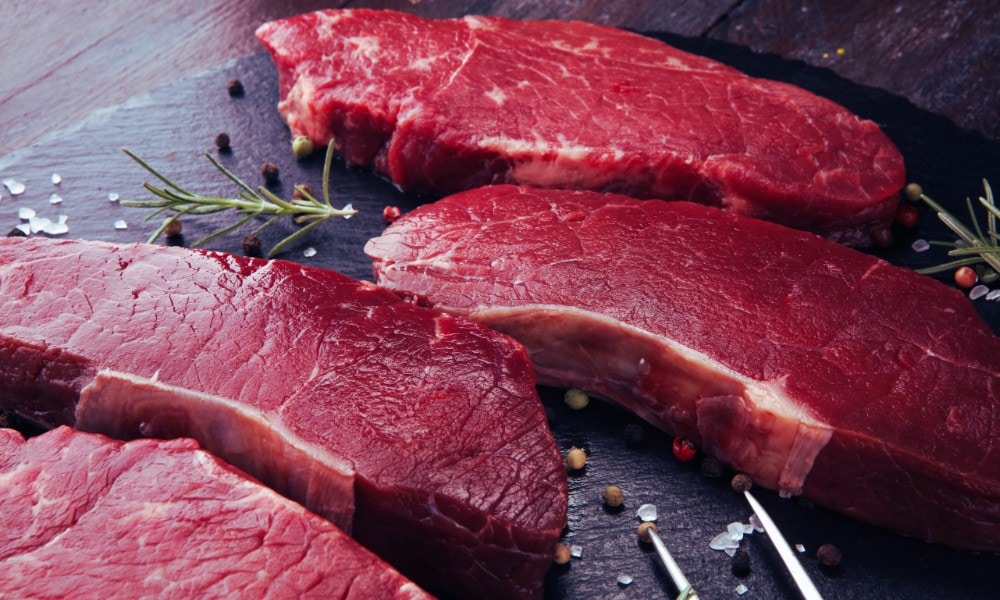
I like to give my rump steaks a good hard sear on both sides over high heat to cook the meat to a perfect pink in the center.
Skirt
Skirt steak is probably not what you automatically think of when you order steak. Instead of being thick and round, the skirt steak is long and flat.
This muscle is found on the outer part of the chest wall and has an intense red color with a daily loose grain.
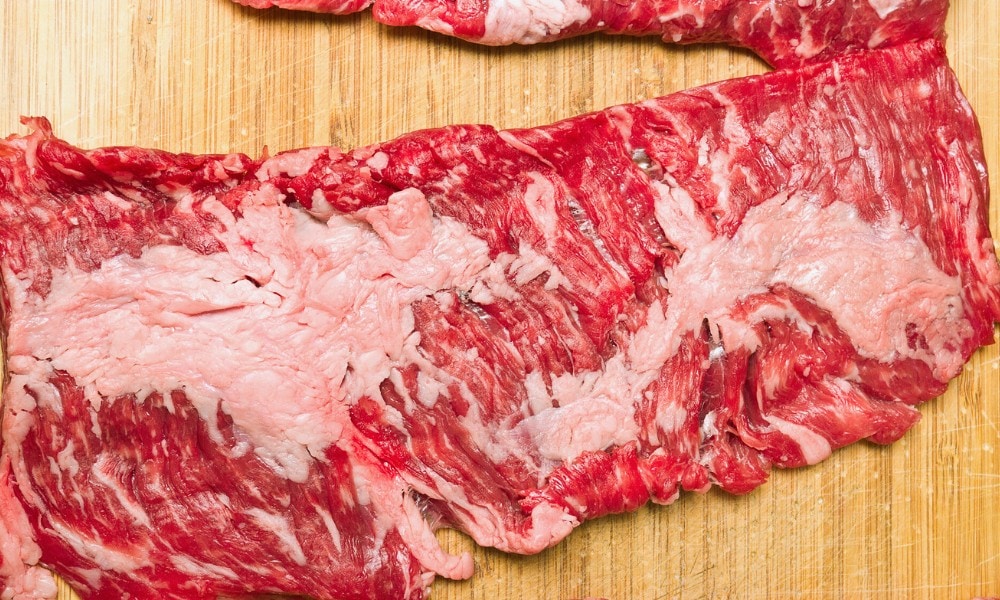
Since skirt steak is so long, it can be cut into multiple portions and quickly seared over high heat. To serve, make sure you cut thinly against the grain to get the most tender texture.
Top Sirloin
Also known as a culotte steak, the top sirloin is a highly sought-after cut that I can’t resist!
As the name suggests, this steak comes from the top of the sirloin, where the muscles don’t work too hard. The meat is well-marbled with a thick fat cap that renders down to make this steak juicy and full of flavor.
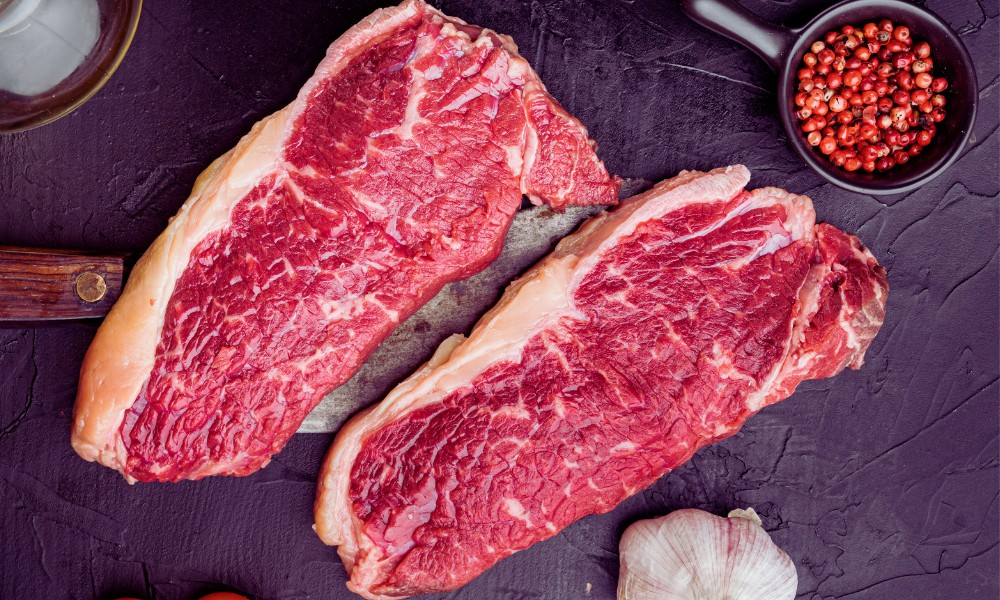
I recommend serving this rich cut rare.
T-Bone
This is a steak that is not for the faint-hearted!
This large steak is cross-cut from the front section of the short loin. It has a large T-shaped bone running along the top and through the center, which gives this steak its name.
It is known as a composite steak because it includes part of the tenderloin on one side of the bone and the New York strip steak on the other. This means that a steak like this can easily serve more than one person, and the different sides of the “T” have different textures.
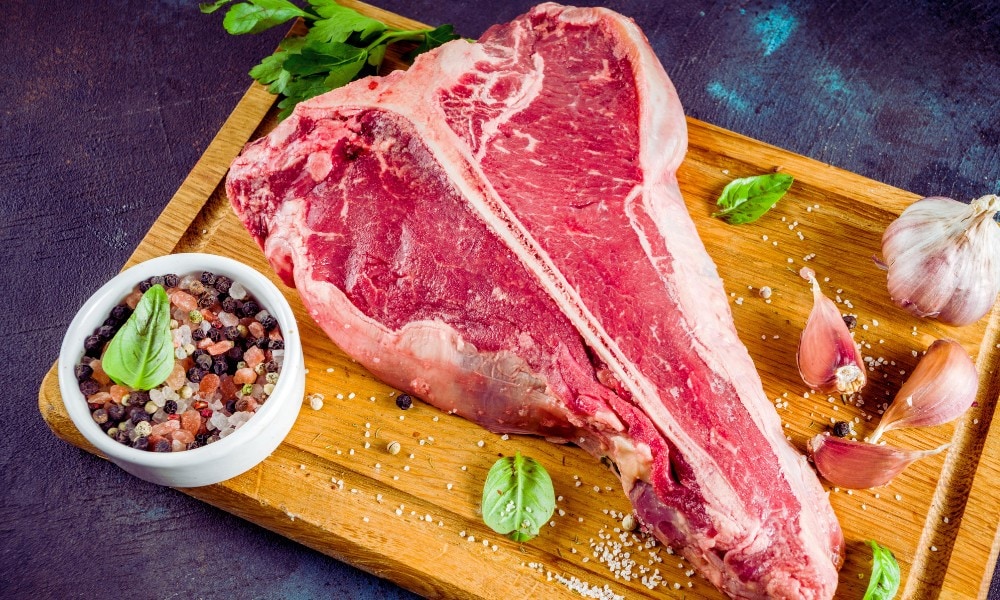
These steaks take a long time to cook because of their thickness, but it’s all worth it for the tenderness and mild flavor.
Bavette
Bavette is a steak that, in my opinion, is highly underrated.
This lean steak is taken from the flank, underneath the short loin, and is relatively thin. Unlike many other steaks, bavette has an apparent grain that becomes even more pronounced with cooking.
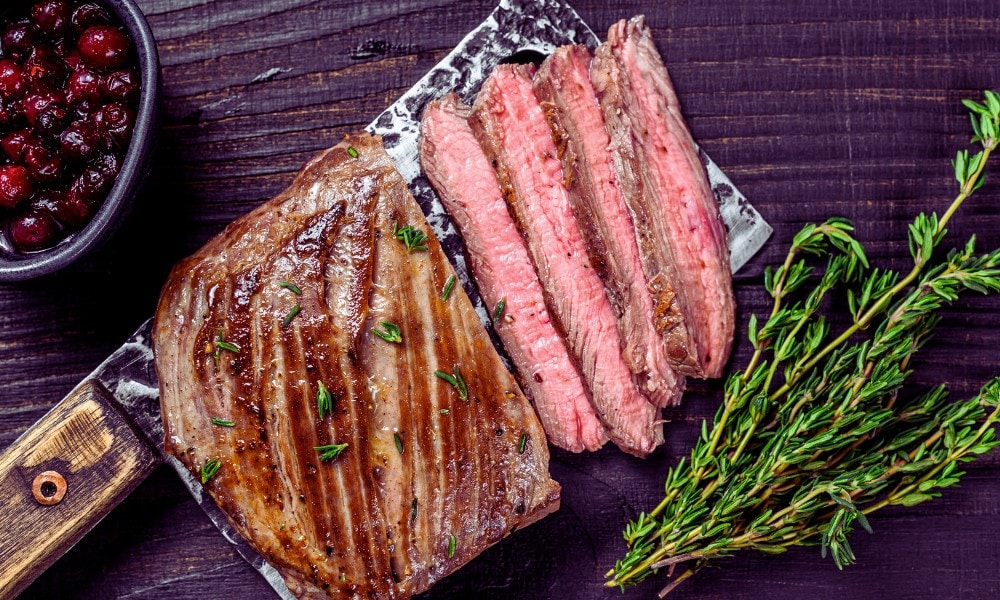
Due to how thin this steak is, it can be easy to overcook, so make sure you get your pan nice and hot before you get cooking. After resting, cut very thinly against the grain for maximum tenderness.
Newport
Also known as a tri-tip steak, the Newport steak is a small triangular cut taken from the bottom of the sirloin.
It is also known as the apartment steak because it is relatively affordable. This is due to the slightly chewier texture in comparison to other steaks. The tougher texture happens because this muscle is kept very busy controlling the knees of the steer.
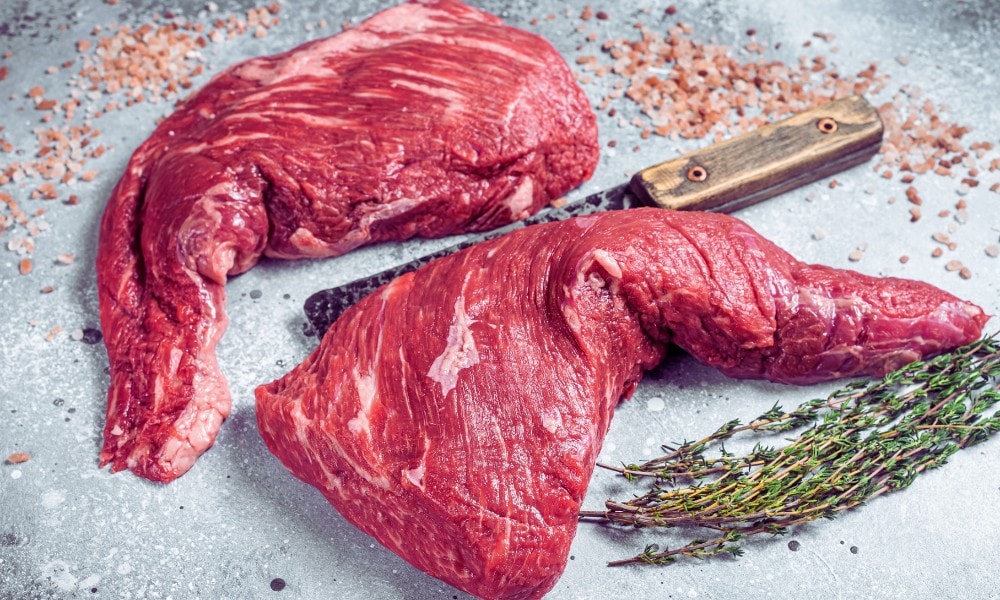
Porterhouse
The Porterhouse is another steak with a T-shaped bone in it. This time, however, the bone is smaller because the steak is cut from the point where the tenderloin and the top loin meet.
This is another composite steak that has a strip steak on one side of the bone and fillet mignon on the other side. Since it is so large, I like to cook my Porterhouse using the reverse sear method of oven cooking before grilling to get the perfect pink.
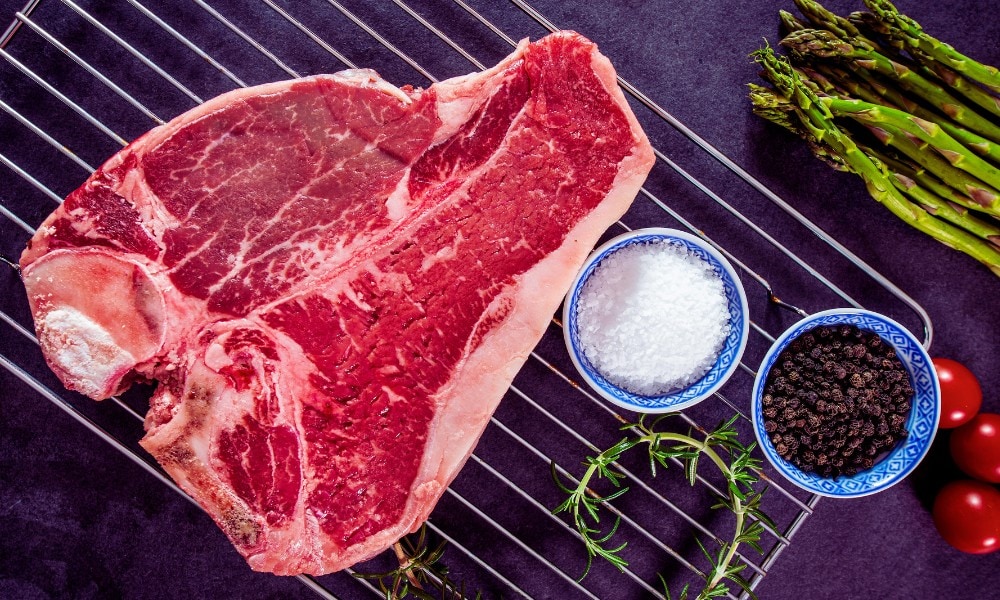
Rib Eye
The ribeye has to be one of my favorite steaks on this whole list.
This chunky cut of steak is taken from the center or ‘eye’ of the rib steak in the rib area of the cow. They are cut thickly with a large fat cap and plenty of marbling through the flesh.
Rib eye can come boneless or bone-in, according to your preference.
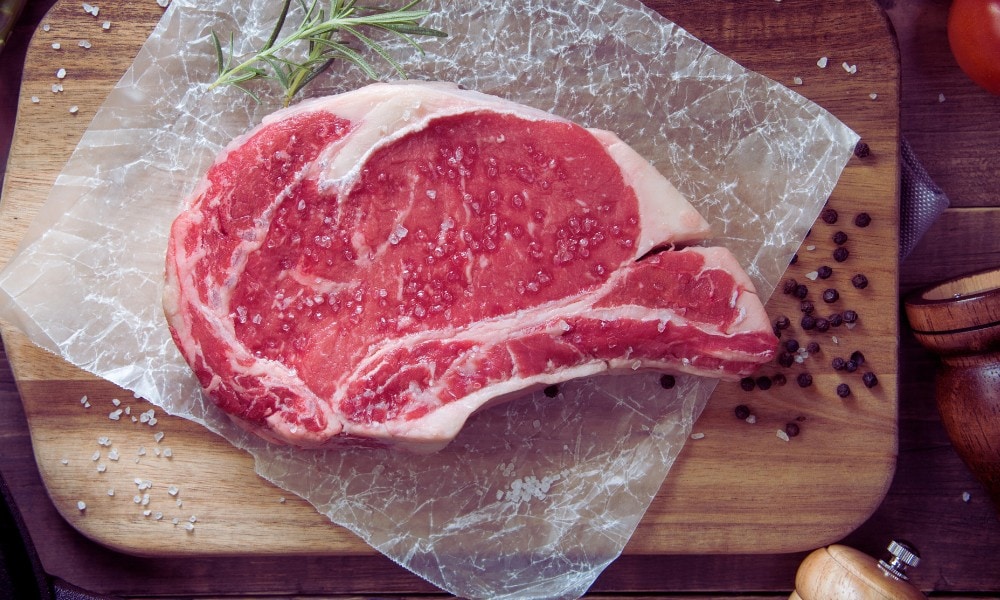
Due to its richness and size, ribeyes are one of the more expensive steaks you can choose, but they are worth it for a treat once in a while.
Filet Mignon
Filet mignon is a famous cut of steak that got its name from being very tender and expensive.
This steak is taken from the tenderloin and has no fat cap. It also has very little marbling. These two factors mean that this cut can be very easy to overcook. All it needs is a very quick sear over high heat to caramelize the outside.
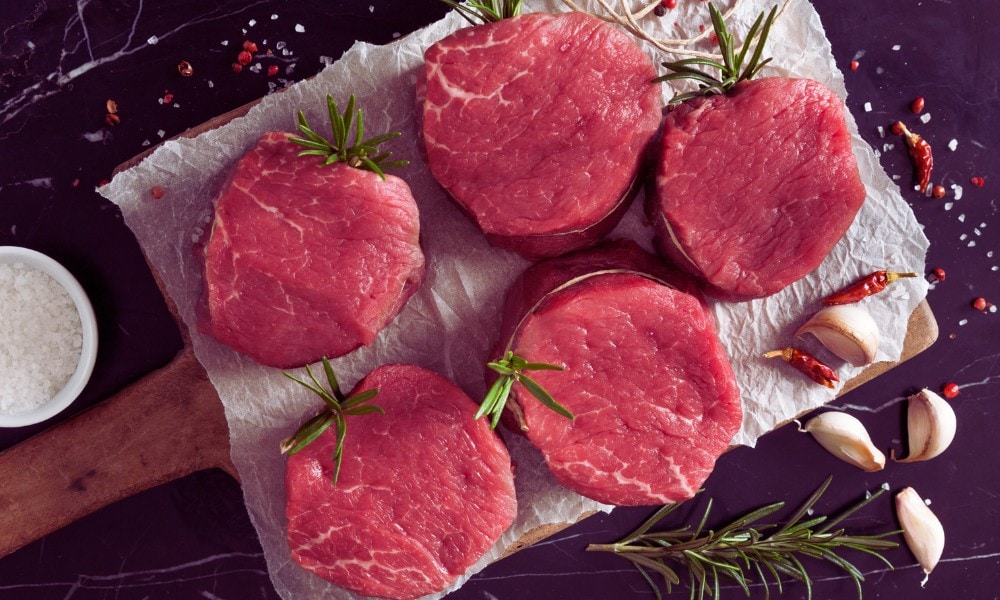
Denver
This is another underrated steak that doesn’t get enough credit for how delicious it is.
The Denver steak is taken from underneath the shoulder blade, which makes it very tender. It has no fat cap, but it has very even, generous marbling that makes it incredibly rich and juicy.
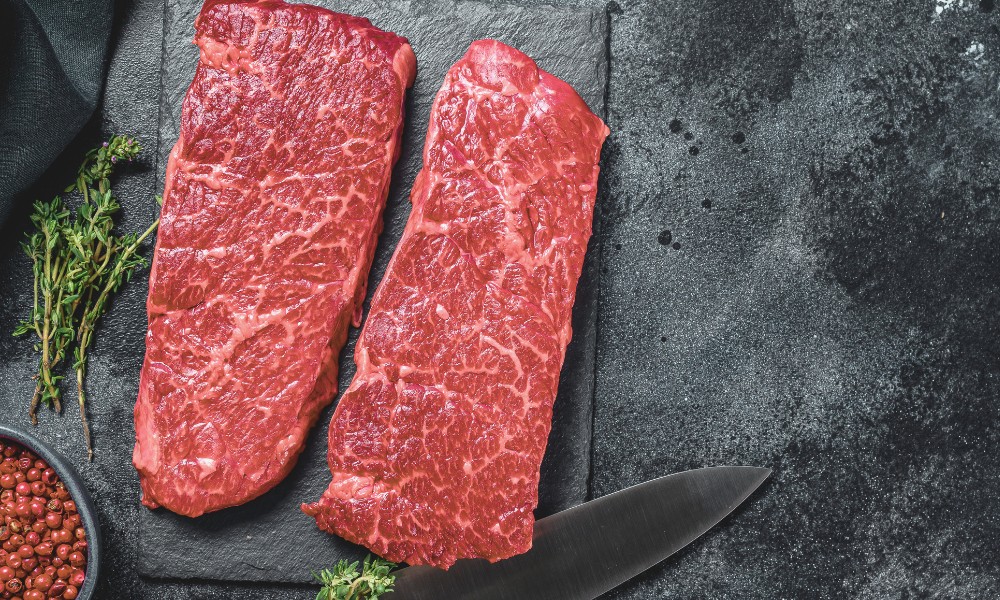
New York Strip
This steak may be small, but it packs a real punch!
New York strip steak is found in the upper part of the short loin. It has become incredibly popular due to its rich marbling, thin, fat cap, and tender texture.
As with many of these steaks, all the New York strip needs is a very quick sear and a thin slice to be at its best.
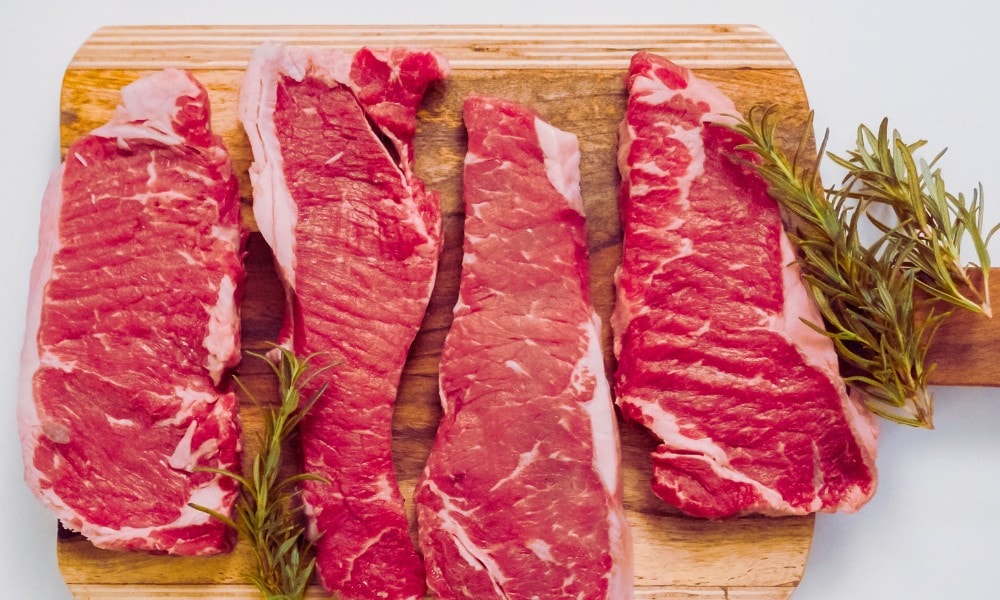
Flat Iron
As the name suggests, a flat iron steak is a small cut, also known as a feather blade steak, because of how thin it is.
This steak is taken from in the chuck and is often overlooked. Even though it is thin, it has good marbling and will be incredibly tender after just a quick sear.
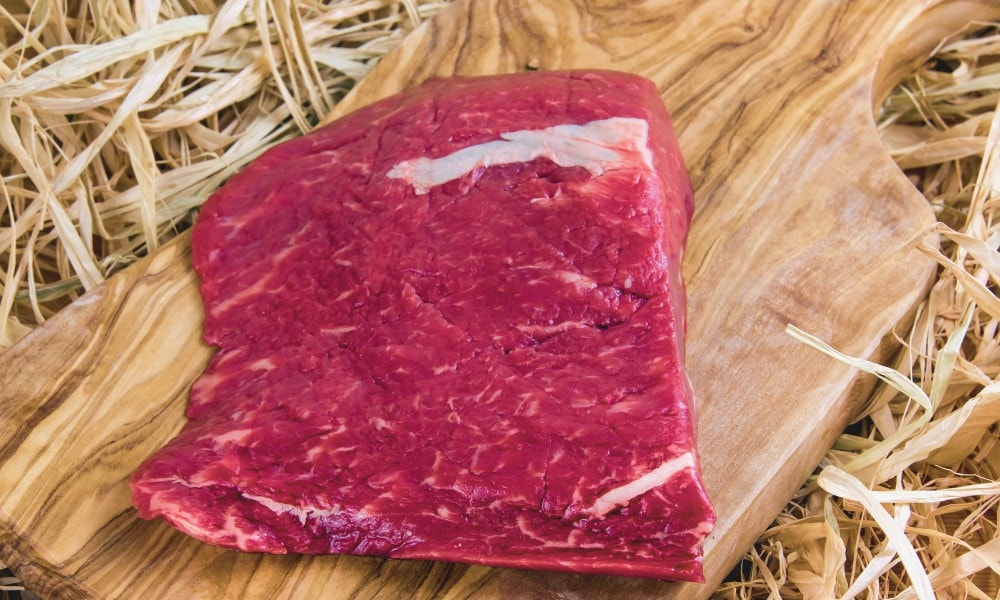
Conclusion
So, in summation, steak can be found in different locations within the body of the cow. Each area will have meat of a different tenderness and size and will require different types of cooking techniques.
The next time you are steak shopping, make sure you use this guide to pick the ideal steak that you can cook up to perfection using the correct technique.

